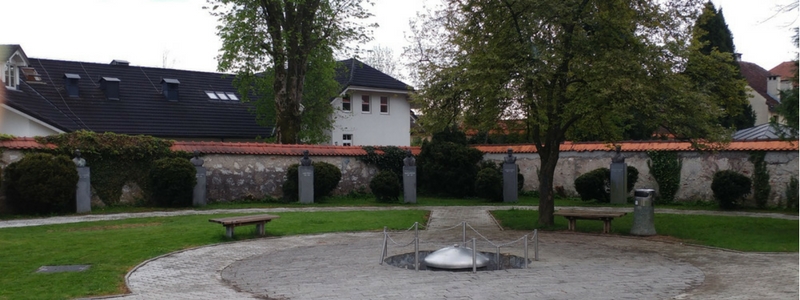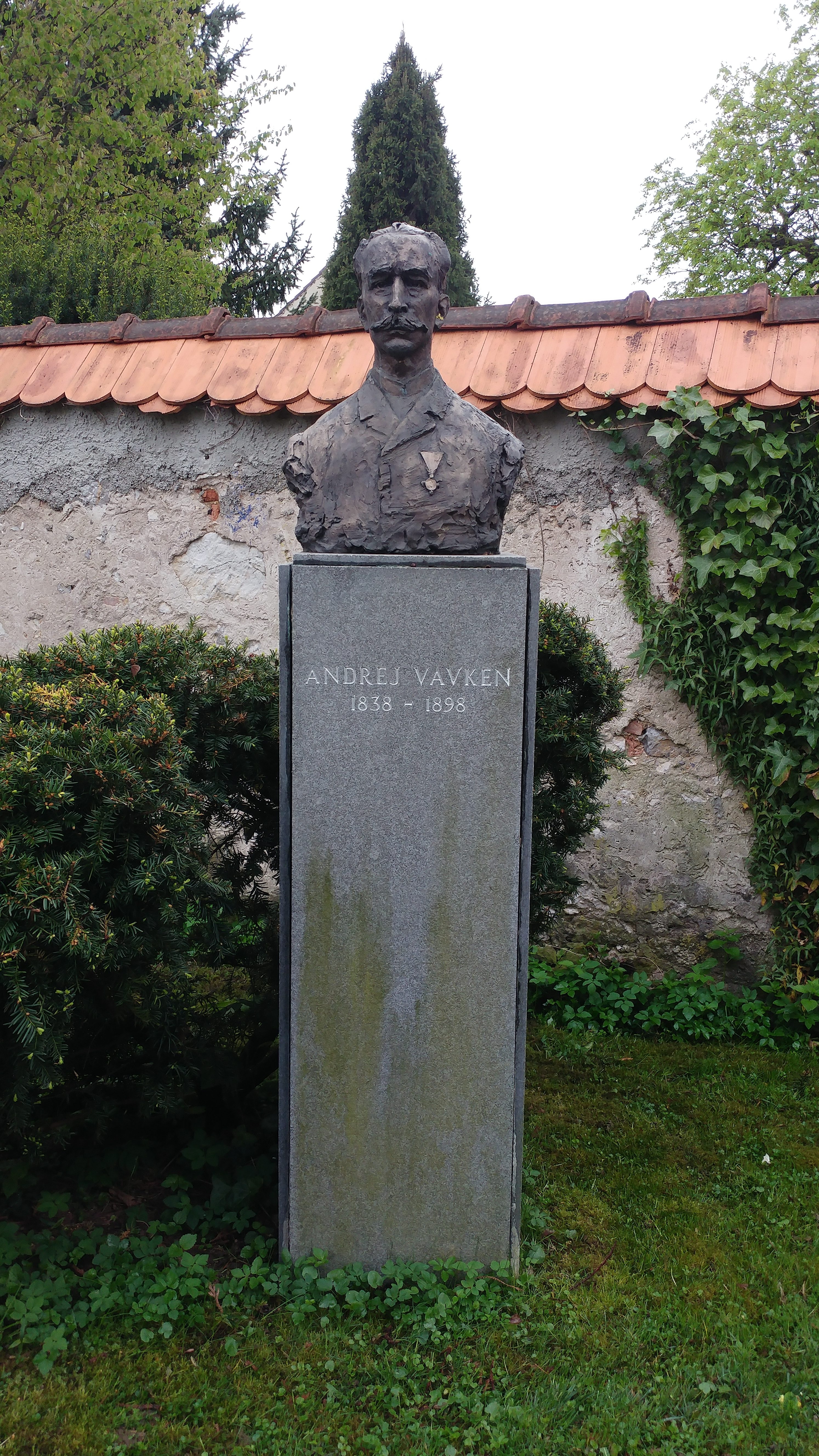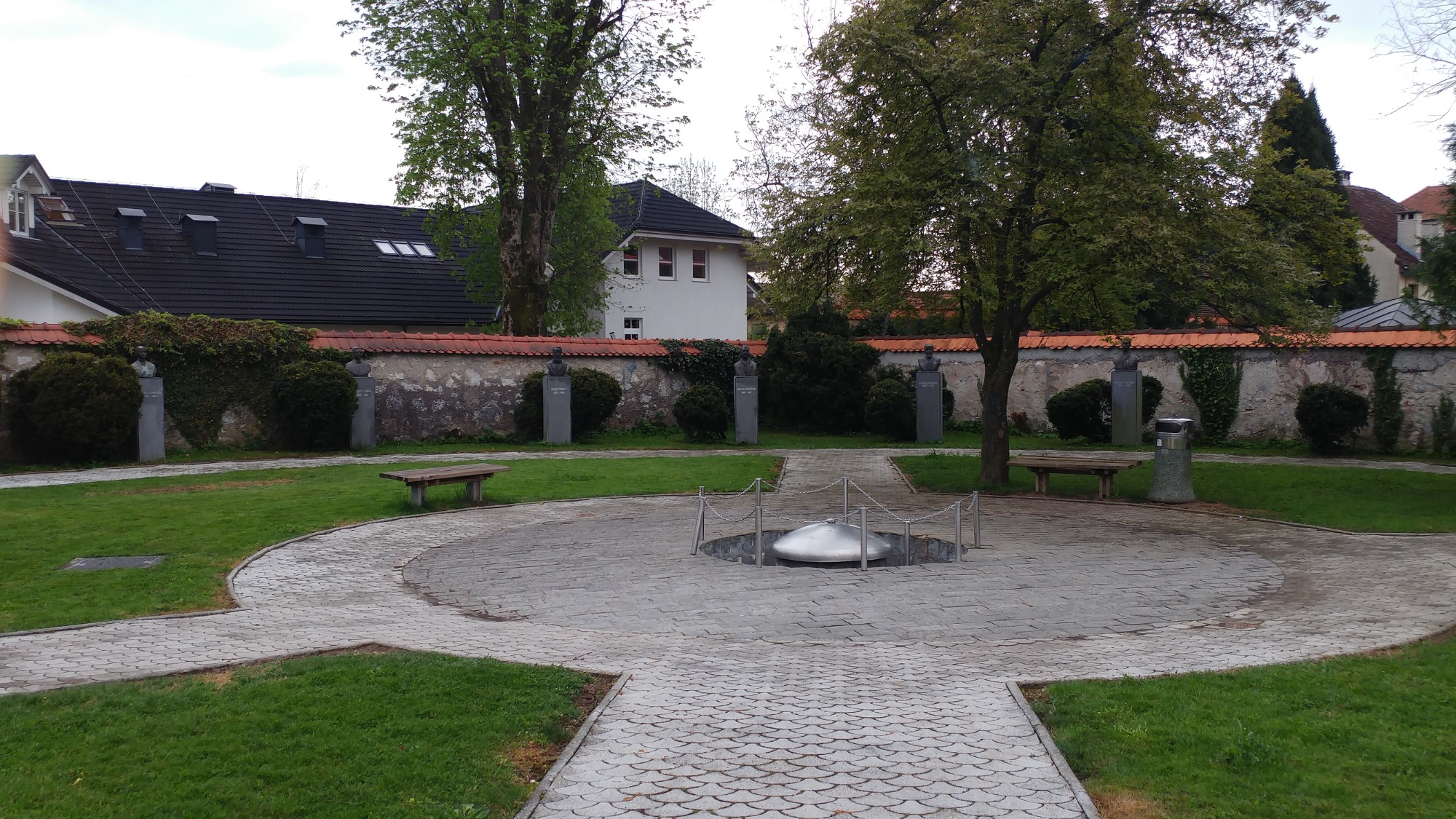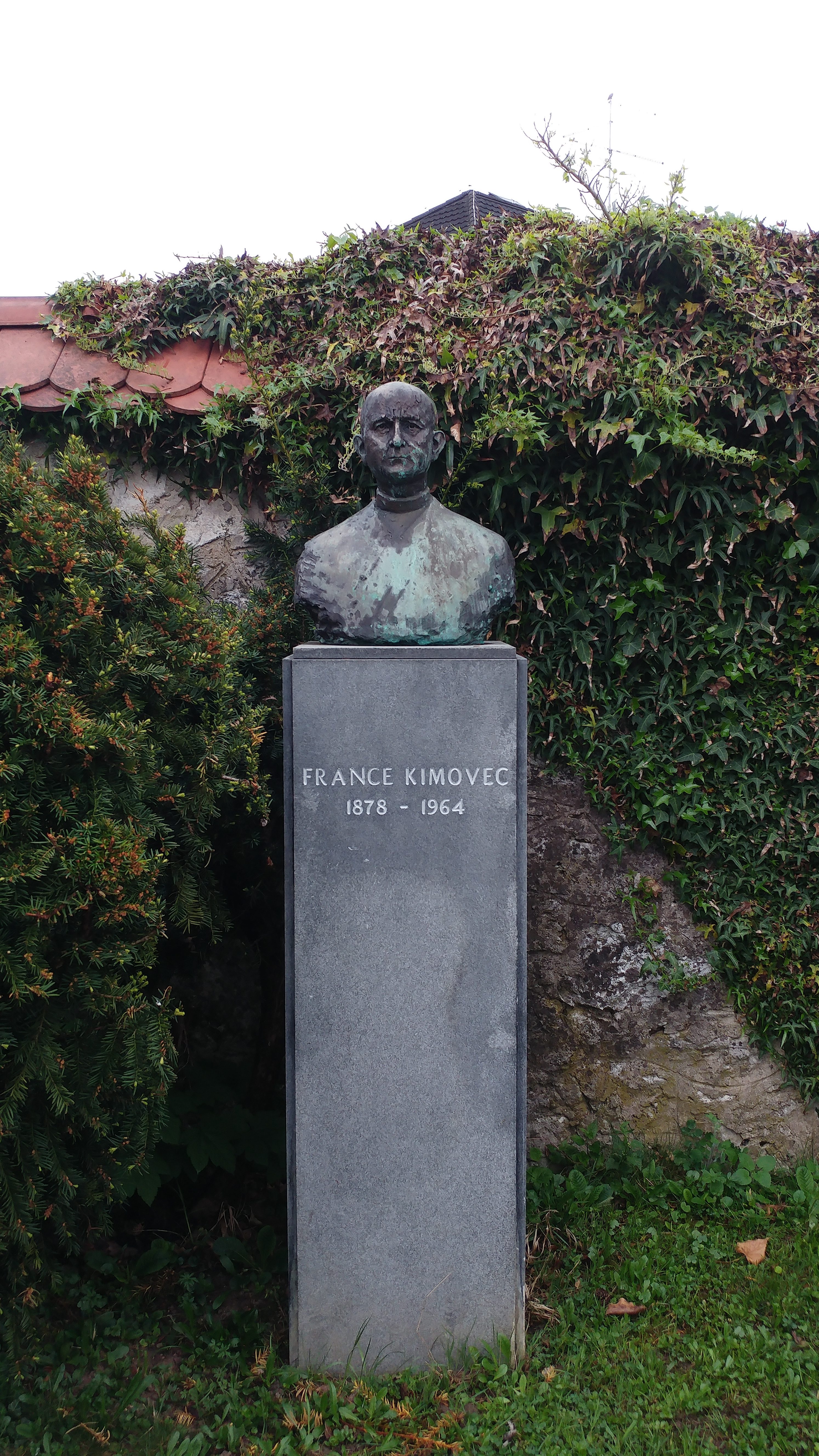The memorial park next to the Hribar Villa in Cerklje was opened in 1999, during the celebration of the municipal holiday and the 80th anniversary of the death of Ignacij Borštnik. His was the first of the busts of notable figures whose achievements and creative work significantly contributed to the development and recognition of the Municipality of Cerklje na Gorenjskem in particular, and Slovenian culture in general. Today, two of the six statues adorning the park are dedicated to musicians: Cerklje teacher and organist Andrej Vavken, and renowned church composer Franc Kimovec, also from Cerklje. The statues were made by Eva Tršar Andlovic.
Andrej Vavken
Andrej Vavken (1838–1898) was an organist, choirmaster and composer of secular and church music. He attended a secondary modern school in Ljubljana and studied music at a public music school in the class of Kamilo Mašek. From 1857, he was a teacher and organist in Cerklje. He retired in 1893. Vavken also served as a mayor, postmaster general and chairman of the Carniolan School Board, and founded a subsidiary of the Agricultural Society and a fire brigade.
He first started to compose as a secondary student, but applied himself to composing more devotedly in Cerklje, where he gained renown for his organ improvisations and as choral director. He published two volumes of secular songs, Glasi gorenski I and II (Carniolan Voices I and II), which include lieder, duets, and music for mixed and male choirs, and Otožnica (Melancholy Song), better known as Vigred se povrne (Spring Returns), which sparked controversies concerning its authorship. (That Vavken really was the composer of the song was established by Marjan Kozina.) He published two collections of religious songs, Napevi cerkvenih pesmi I and II (Church Song Tunes I and II), and a collection Pesmi z napevi za cerkev in solo (Songs with Tunes for Church and Solo Singing). His output contains around 90 compositions, many of which are preserved merely as manuscripts.
His composing style follows in the tradition of church folk singing, as cultivated by Gregor Rihar, and the singing style of reading rooms. His musical texture incorporates elements of classicism and early romantic music, displaying homophonic movement of voices and simply structured yet dynamic melodicism. These characteristics rendered his pieces highly popular among the people. Although his composing style differed from the rigorous Caecilian principles, he was acknowledged by the Caecilian Movement.
Maia Juvanc
France Kimovec
Versatile musician Franc Kimovec (1878–1964) was a composer, critic, music essayist, editor and teacher. He devoted himself primarily to reviving and spreading folk church singing. He held high-ranking positions in the ecclesiastical hierarchy, ultimately that of the Ljubljana cathedral provost.
He attended primary school in Zalog, Cerklje and Kranj, and grammar school in Ljubljana, where he completed his studies of theology in 1902. After obtaining a PhD degree in theology and a BA in church art in Rome, he received a BA in music in Vienna. At the Department of Church Music of the Academy of Music and Performing Arts in Vienna, he studied organ, choral conducting and church singing and took further instruction in composition. He then served as a priest in Ljubljana, also teaching at the Organ School and conducting its choir. In his talks, he instructed the audiences on the mechanism of the pipe organ, and as an expert in campanology, urged church dignitaries to have quality bronze bells installed.
His composing output consists primarily of choral and organ music. He scored around 500 works, drawing particularly from folk melodicism and Gregorian chorale. His most notable composing achievements include masses Missa montana gracilis, Missa pastoralis brevissima – Lepi hlevček Betlehem (Fair Manger Bethlehem) and Missa regina pacis. Also noteworthy are his mass, offertory, Eucharistic and Marian songs, including Odprta so sveta nebesa, Petje nebeških trum, Sapica maja, Ti, ki si najlepša, Tiho sonce plava and Ti si tista (Open Heavenly Spheres; Voices of Celestial Beings; May Breeze; Thou, Fairest One; Calm Course of the Sun; You’re the One).
Kimovec also contributed periodical articles, writing about organ masters, composers, bells and the history of music, and reviewing new music releases in Cerkveni glasbenik (Church Musician). He proposed the design for a series of new organs in Slovenia, served as president of the Choral Association for several years and edited the first five volumes of the Pevec (Singer) publication. He also contributed reviews to Slovenec and Dom in svet (Slovenian, Home and World).
Maia Juvanc



